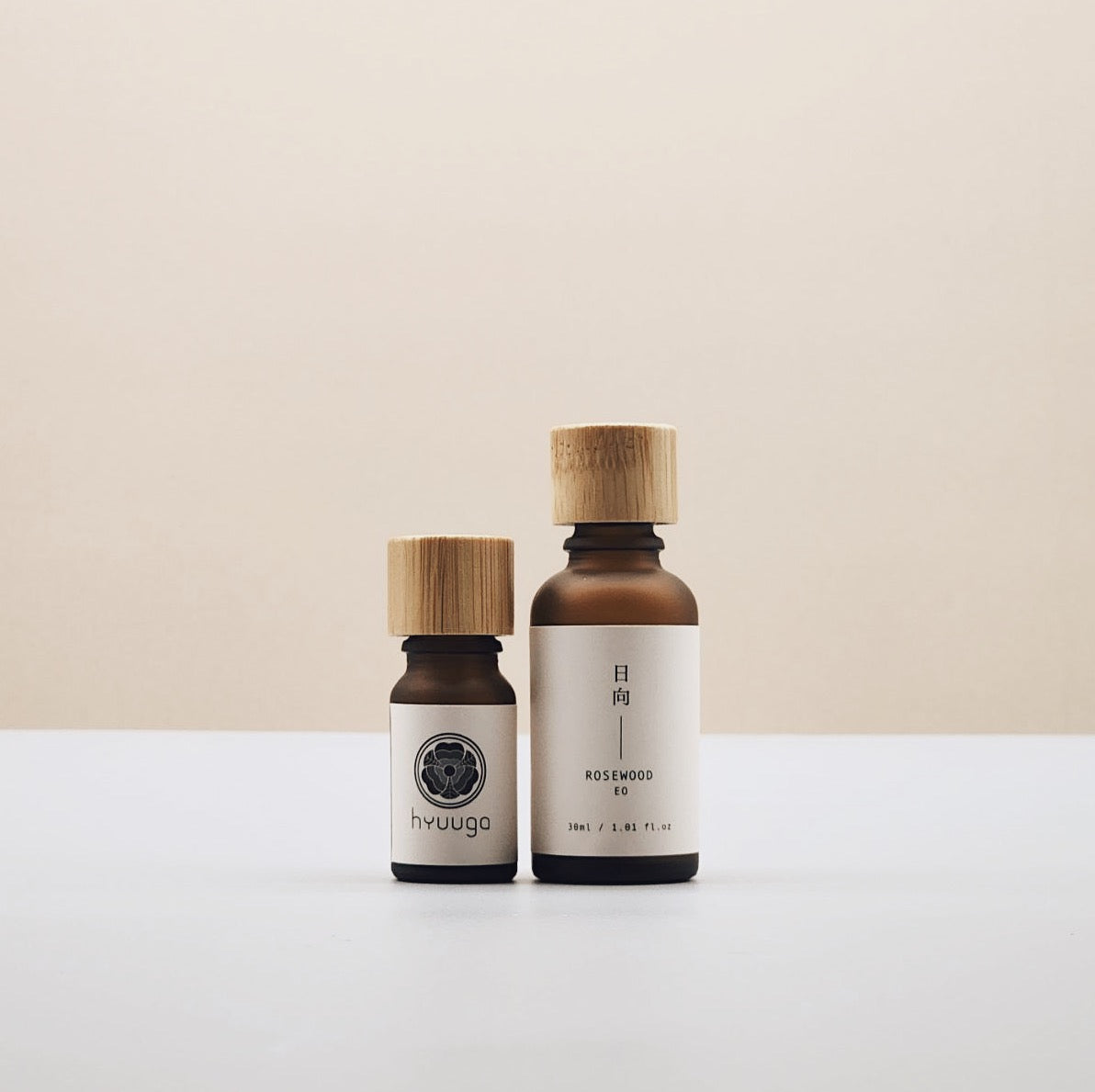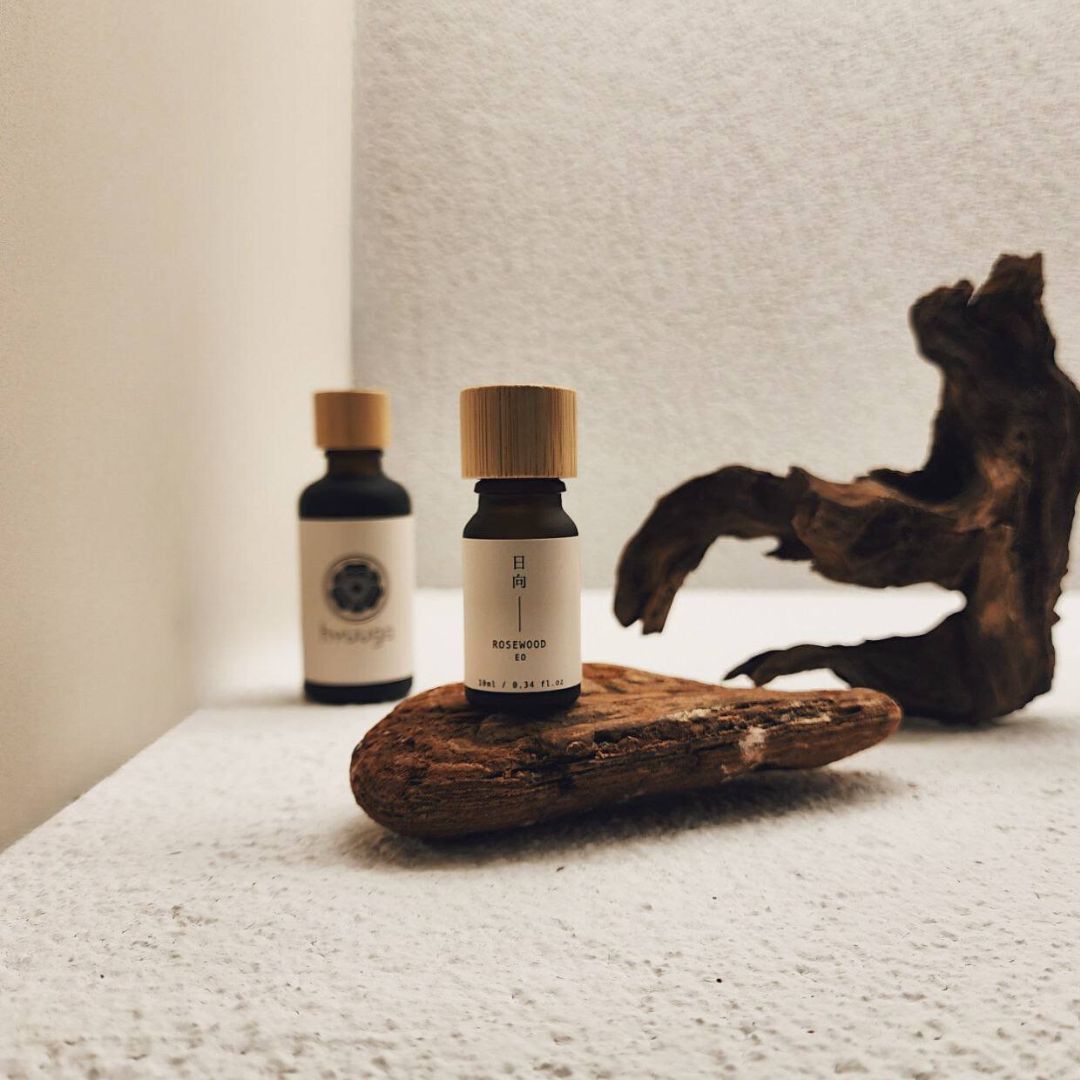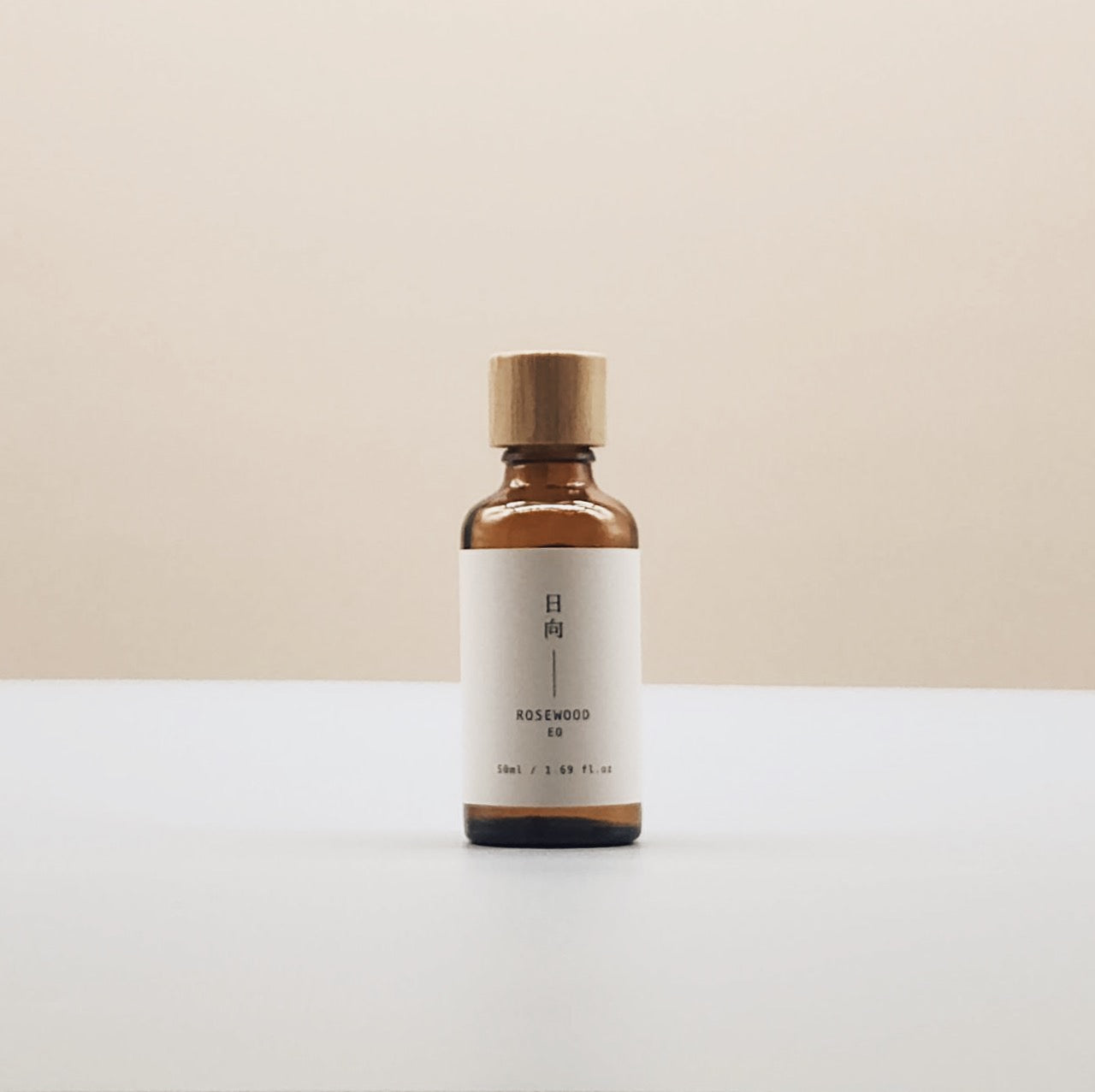Rosewood essential oil
- Regular price
- $50.00 SGD
- Regular price
-
$50.00 SGD - Sale price
- $50.00 SGD




Botanical name: Aniba rosaeodora
Ingredient: 100% pure essential oil
Extraction method: Steam distillation
Country of Origin: Brazil
Aroma: Sweet, woody, fruity aroma with a floral quality
Blends well with: Ylang ylang, rosemary, lavender, geranium, frankincense, orange, bergamot, neroli, lime, lemon, grapefruit, and more.
Handcrafted in small batches in Singapore
Rosewood oil’s subtle smell is soft, sweet, and spicy, with fresh floral notes. It is reminiscent of rose, citrus, and wood. This colourless or pale-yellow oil is distilled from the heartwood of the evergreen rosewood tree, Aniba roseaodora. Reaching heights of 125 feet, this member of the Lauraceae family has reddish bark and yellow flowers. It is native to the tropical areas around the Amazon river.
Rosewood trees grow and are harvested in the rain forests of South America. During the yearly flood season, huge rosewood tree trunks float downstream headed for the distilleries. Peru and Brazil supply most of the world’s rosewood oil. So that the harvesting of rosewood trees does not lead to their extinction or to deforestation of ecologically sensitive areas, Brazilian legislation now requires that one new tree be planted for each one cut down.
The original site of production of bois de rose, as the French called rosewood, was French Guiana, on the northern coast of South America. So great was the demand among the French for rosewood oil, which was used to create lily of the valley and lilac type fragrance, that the French depleted the colony’s rosewood forests. Carvings and chopsticks were commonly made from rosewood; the rose-scented heartwood was frequently used in cabinetmaking and to make handles for cutlery and hairbrushes. As an aphrodisiac, rosewood oil reputedly could restore a lost or diminished sex drive and overcome frigidity and impotence.
Rosewood oil is an overall tonic for balancing the body; it is neither too stimulating nor too sedating. By boosting the immune system, it deters colds and the flu, subdues coughs, and fights fever, It clears the head and eases headaches, especially those caused or accompanied by nausea. Rosewood oil promotes alertness and can diminish jet lag. It helps to heal cuts and wounds, and reduces and itching and inflammation of psoriasis, eczema, and other forms of dermatitis.
Until relatively recently, rosewood oil was used primarily in perfumery. When used in skincare, it stimulates new cell growth, regenerates tissue, and minimizes lines and wrinkles. Rosewood oil can balance either dry or oily skin. It soothes sensitive and inflamed skin; it also clears blemishes and improves acne. Regular application, it helps to diminish scars.
Rosewood oil calms and steadies the nerves and helps relieve anxiety, hyperactivity, and stress. It strengthens the nervous system and balances emotions. Rosewood oil arouses alertness, especially under stressful circumstances. It encourages self- acceptance and the appreciation of others. As a subtle aphrodisiac it stirs positive sensual feelings, especially in people whose past sexual experiences were traumatic.
Your Shopping Cart is Empty
Browse our latest collection or check your saved favorites to add more items to your cart.
Manage your profile, track your orders, and enjoy a seamless shopping journey with us.
Botanical name: Aniba rosaeodora
Ingredient: 100% pure essential oil
Extraction method: Steam distillation
Country of Origin: Brazil
Aroma: Sweet, woody, fruity aroma with a floral quality
Blends well with: Ylang ylang, rosemary, lavender, geranium, frankincense, orange, bergamot, neroli, lime, lemon, grapefruit, and more.
Handcrafted in small batches in Singapore